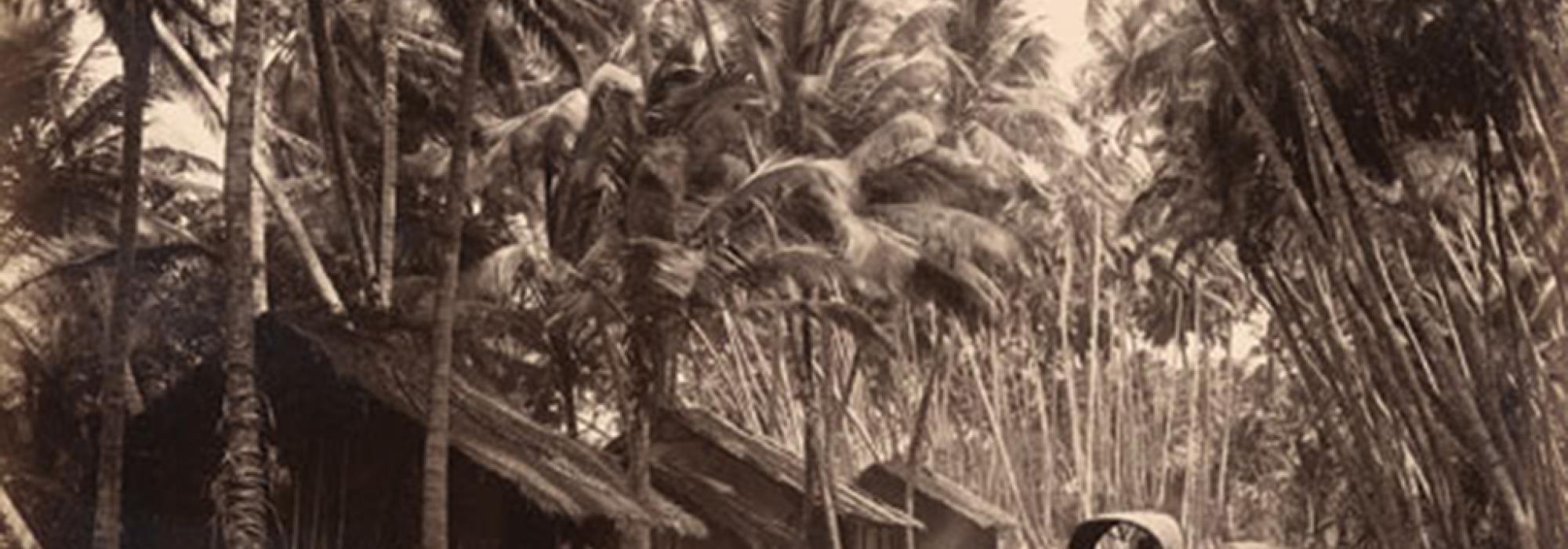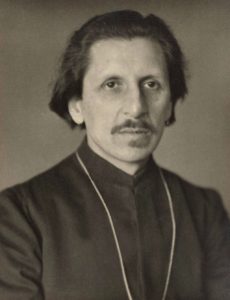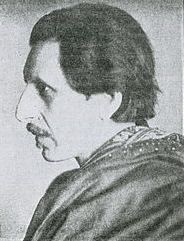Ananda Coomaraswamy is one of the little-known figures of India. Which is baffling because a vague estimate of his works runs into more than 15,000 pages. It is all the more baffling because his range of subjects is almost beyond belief and his grasp of their intricate nuances is staggering.
It is almost impossible to slot Coomaraswamy into a single category for he was all of them: philosopher, historian, art historian, polyglot, cultural anthropologist, metallurgist, mineralogist, archaeologist, art collector, and a revivalist. His works if they are read at all, are read by few; part of the reason is, in his own words, “I write for the professional.” However, that is not entirely true. While the bulk of his research articles can be understood by experts in the field, his books can be understood by all. The main reason he hasn’t gained due recognition is because he spent most of his later years in the United States and interest in ancient India was frowned upon in independent India.
Coomaraswamy is in the same league as Swami Vivekananda or Dayananda Saraswati. While these men worked more “among the masses,” so to say, Coomaraswamy lent intellectual force to strengthen the battered ancient Indian spirit. It is now widely recognized that Hindus need to revive what they were famous for–intellectual rigor to beat the West at their own game. Ananda Commaraswamy’s greatest service to India was to revive Indian art and to expose the hollowness of Western art. I think it is a wee bit unjust to mention just art because his genius encompassed everything. However, he first captured the world’s attention in this field, and the bulk of his copious writing deal with this, I’ve said so.
His essay, Indian Idols With Many Arms tears apart Western art critics’ contempt of Indian sculpture rooted in ignorance of Indian traditions. Ananda Coomaraswamy set the tone for examining Western scholarship on Indic traditions almost a century earlier. I won’t be entirely off the mark if I state that Ananda Coomaraswamy pioneered the current scholarly efforts in this area–challenging Eurocentrism in Indology and the rest. Why, Coomaraswamy is himself an example of Eurocentrism: for long, he was referred to only as an art historian which meant ignoring his stupendous work in other areas.
Unlike his contemporary English-educated Hindus and their descendants today, Coomaraswamy was never an apologist for Hinduism. He showed on the contrary, the hollowness of the post-Englightenment West whose idea of civilization is mindless materialism, an idea it still seeks to perpetuate on other nations by projecting it as the only model of development. Coomaraswamy’s works are now slowly being revived with many of his books seeing reprints, and are now widely available in India itself. For one who loved India passionately, Ananda Coomaraswamy was not an Indian by birth.
Born Ananda Kentish Coomaraswamy in Colombo in 1877, his father Sir Muthu Coomaraswamy a legislator in Sri Lanka, had married an aristocratic English lady named Elizabeth Beeby. Ananda lost his father early in childhood and mother and son migrated to England. It is said that he owed his interest in ancient India to his mother who equally loved the country and instilled it in her son. After graduating from the University of London, he became Director of the Mineralogical Survey of Ceylon. Coomaraswamy pursued his passion in Indian art at this juncture and over a life spanning seventy years, collected a staggering number of artifacts. Most of these today are displayed to the public in the Boston Museum; what’s noteworthy is he paid for several of these and in the end, donated them to the museum. He died on 9 September 1947.
Most people familiar with Ananda Coomaraswamy are bound to mention The Dance of Shiva, a collection of fourteen essays. Coomaraswamy is perhaps one of the few writers whose quality of work remains consistently high throughout. His works are characterized by bountiful footnotes in the tradition of Western scholarly writing. Coomaraswamy draws deep from the primary sources and never shies away from criticizing the most hallowed scholar of the day. In Indian Images with Many Arms for instance, he takes apart such art critics as Vincent Smith, Maskell and Birdwood.
Certain writers, speaking of the many-armed images of Indian art, have [stated] this as an unpardonable defect… enough has been given to show that for a certain class of critics there exists the underlying assumption that in Indian art the multiplication of limbs or heads, or addition of any animal attributes, is in itself a very grave defect, and fatal to any claim for merit in the works concerned.
And then draws on accepted principles of Western art criticism. Based solely on these principles, Coomaraswamy demolishes their ignorant criticism of Indian art as:
…a work of art is great in so far as it expresses its own theme in a form at once rhythmic and impassioned: through a definite pattern it must express a motif deeply felt. From this point of view…we must take each work of art upon its own merits… an image with many arms or heads maybe called an inferior work of art…if it lacks any one of the four qualities demanded by Mr. Holmes… But if it has such qualities, if it is felt, need we further concern ourselves with arithmetic?
His Introduction to Indian Art is itself a masterpiece, mandatory reading for anybody interested in the subject. Among others, he rubbishes the famous art for art’s sake phrase as meaningless: that he uses this to highlight the superiority of Indian art over its Western counterpart is significant. According to Coomaraswamy, art should both delight and be of practical use. He uses the example of commonplace furniture to illustrate this: a furniture can–and should–delight you with its intricate carving/work, etc and still be used for what it is meant. The contrast can’t be starker: today, tens of upmarket “antique furniture” shops sell pieces of exquisite furniture which were perhaps commonplace in every Indian home hundreds of years ago. The typical buyer will purchase these not for their practical utility but for its “antique” or “artistic” or “prestige” value. In simpler terms, what Coomarswamy condemned was art divorced from (practical) life.
This is a principle that applied equally to all areas of ancient India: music, dance, philosophy, and literature. Keeping the Part intact without losing the consciousness that it belongs to the Whole. The best instance of this is Indian philosophy. Philosophy in India was never a separate branch of learning but was intermixed in its every aspect unlike the West where it is little more than an idle intellectual quest. Few men have equaled Ananda Coomaraswamy in extolling this with such grandeur and intellectual brilliance. His seminal Dance of Shiva is but one of the numerous expositions on the subject: thirteen pages of unparalleled description of the symbolism of Nataraja.
Coomaraswamy was also one of the first to recognize and condemn the far-reaching disastrous consequences of Macaulayite education system. In Education in India, he writes,
I cannot think that European teachers and educationists quite realize how far “English” education as it is given in the East is crushing all originality.. in the unfortunate individuals who pass through the mill. Yet the “Babu” and the “failed B.A.” upon whom the Englishman looks down so contemptuously are the fruit of his own handiwork, the inevitable result of the methods of education which he himself has introduced. Broadly speaking, you take a people, and educate its children in foreign subjects, and do so in a foreign language, ...ignoring their own culture–and then are surprised at their stupidity! Suppose that England was governed by Chinamen, and a premium set on Chinese culture; English children taught Chinese subjects in the Chinese language, and left to pick up the English language and traditions anyhow at home–would there not be some “failed mandarins?”
Call it prophetic or simply a piece of brilliant reasoning, it nevertheless does little to alter its message. Babus abound aplenty today and speaking English with an accent–acquired or otherwise–is an end in itself. While this isn’t an evil in itself, the price India has paid for it is staggering; in one line: loss of national and cultural identity. Thus we have–at least most of urban India has–been reduced to fabulous imitators of several “isms” which are but cheap imports from the West. A classic example is feminism, which Coomaraswamy condemns roundly in Status of Indian Women (emphasis mine):
The Asiatic theory of marriage, which would have been . comprehensible in the Middle Ages, before the European woman had become an economic parasite … is not readily intelligible to the industrial democratic consciousness of Europe and America, which is so much more concerned for rights than for duties, and desires more than anything else to be released from responsibilities–regarding such release as freedom. It is thus that Western reformers would awaken a divine discontent in the hearts of Oriental women, forgetting that the way of ego-assertion cannot be a royal road to realisation of the Self.
Prophetic again. Every other news item today is about this or that group demanding rights. These champions of rights often take recourse to the Constitutional Fundamental Rights but seldom if ever, mention the Fundamental Duties! And so, he says "Current Western theory seeks to establish marriage on a basis of romantic love and free choice; marriage thus depends on the accident of “falling in love.” …This individualistic position…is only logically defensible if at the same time it is recognized that to fall out of love must end the marriage… But do not let us deceive ourselves that because the Western marriage is nominally founded upon free choice, it therefore secures a permanent unity of spiritual and physical passion. On the contrary… it holds together those who are no longer ‘in love’; habit, considerations of prudence, or, if there are children, a sense of duty often compel the passionless continuance of a marriage for the initiation of which romantic love was felt to be a sine qua non. Those who now live side by side upon a basis of affection and common interest would not have entered upon marriage on this basis alone. […] Criticism of the position of the Indian woman from the ground of assertive feminism leaves us entirely unmoved: precisely as the patriot must be unmoved by an appeal to self-interest… We do not object to dying for an idea as…patriots have died; but we see that there may be other and greater ideas we can better serve by living for them."
As I said earlier, Coomaraswamy leaves no aspect of ancient India untouched, and when he does, touches it with breathtaking profundity. Writing in the preface to Dance of Shiva, Romain Rolland remarks:
…In a series of essays, which are apparently detached, but all of which spring from the same central thought and converge into one design, the vast and tranquil metaphysic India is unfolded; her conception of the universe, her social organisation, perfect in its day and still capable of adaptation to the demands of modern times; the solution which she offers for the feminist problem … and lastly, the magnificent revelation of her art.
Ananda Coomaraswamy understood the pulse of Indian spirituality, traditions and way of life, saw and sought greatness in them, and shared them with the world. He showed to a generation of demoralized Indians aspects of their own culture they could be proud of.
He is yet to receive the recognition he deserves in India.
















































